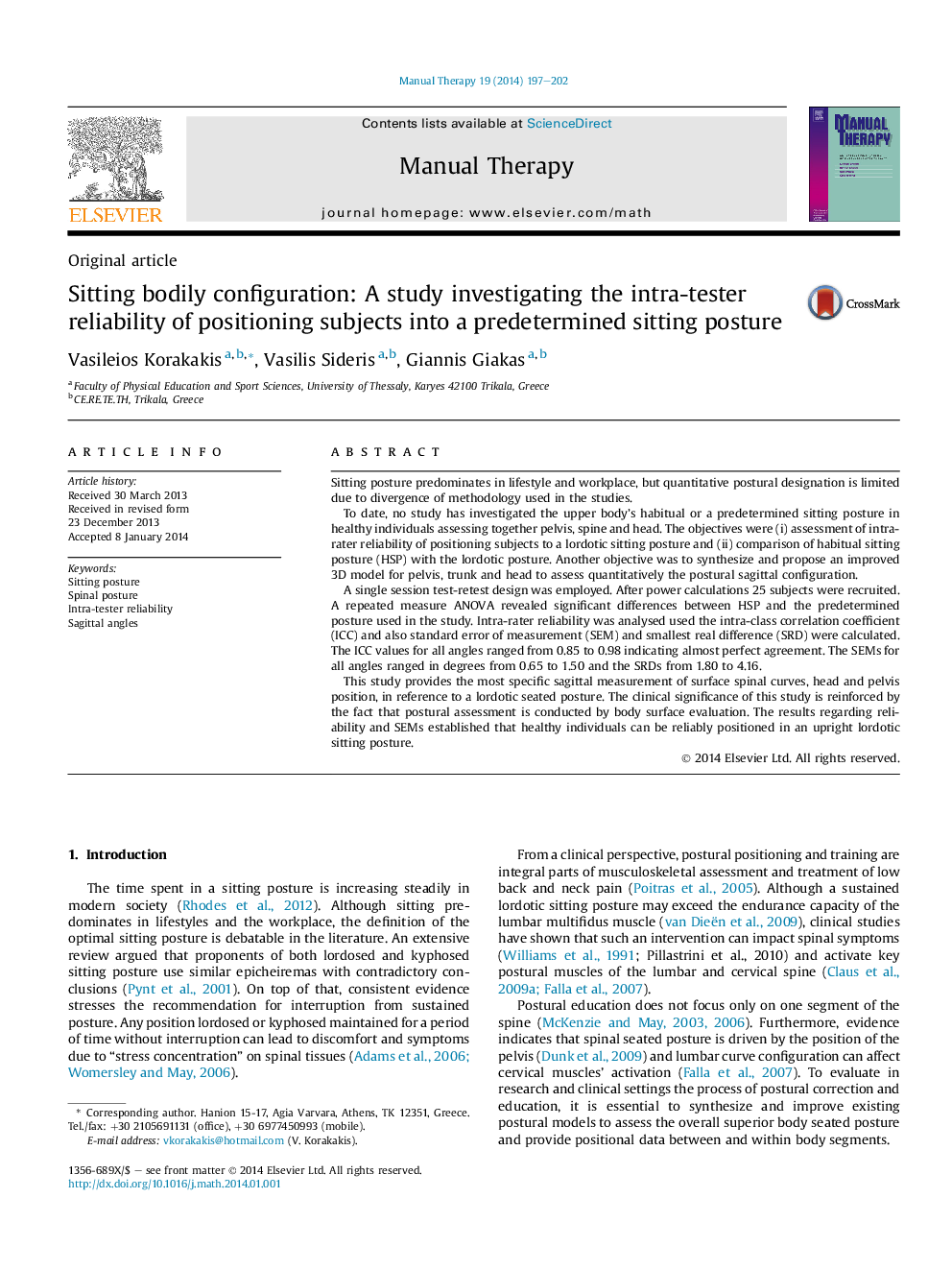| Article ID | Journal | Published Year | Pages | File Type |
|---|---|---|---|---|
| 2625336 | Manual Therapy | 2014 | 6 Pages |
Sitting posture predominates in lifestyle and workplace, but quantitative postural designation is limited due to divergence of methodology used in the studies.To date, no study has investigated the upper body’s habitual or a predetermined sitting posture in healthy individuals assessing together pelvis, spine and head. The objectives were (i) assessment of intra-rater reliability of positioning subjects to a lordotic sitting posture and (ii) comparison of habitual sitting posture (HSP) with the lordotic posture. Another objective was to synthesize and propose an improved 3D model for pelvis, trunk and head to assess quantitatively the postural sagittal configuration.A single session test-retest design was employed. After power calculations 25 subjects were recruited. A repeated measure ANOVA revealed significant differences between HSP and the predetermined posture used in the study. Intra-rater reliability was analysed used the intra-class correlation coefficient (ICC) and also standard error of measurement (SEM) and smallest real difference (SRD) were calculated. The ICC values for all angles ranged from 0.85 to 0.98 indicating almost perfect agreement. The SEMs for all angles ranged in degrees from 0.65 to 1.50 and the SRDs from 1.80 to 4.16.This study provides the most specific sagittal measurement of surface spinal curves, head and pelvis position, in reference to a lordotic seated posture. The clinical significance of this study is reinforced by the fact that postural assessment is conducted by body surface evaluation. The results regarding reliability and SEMs established that healthy individuals can be reliably positioned in an upright lordotic sitting posture.
